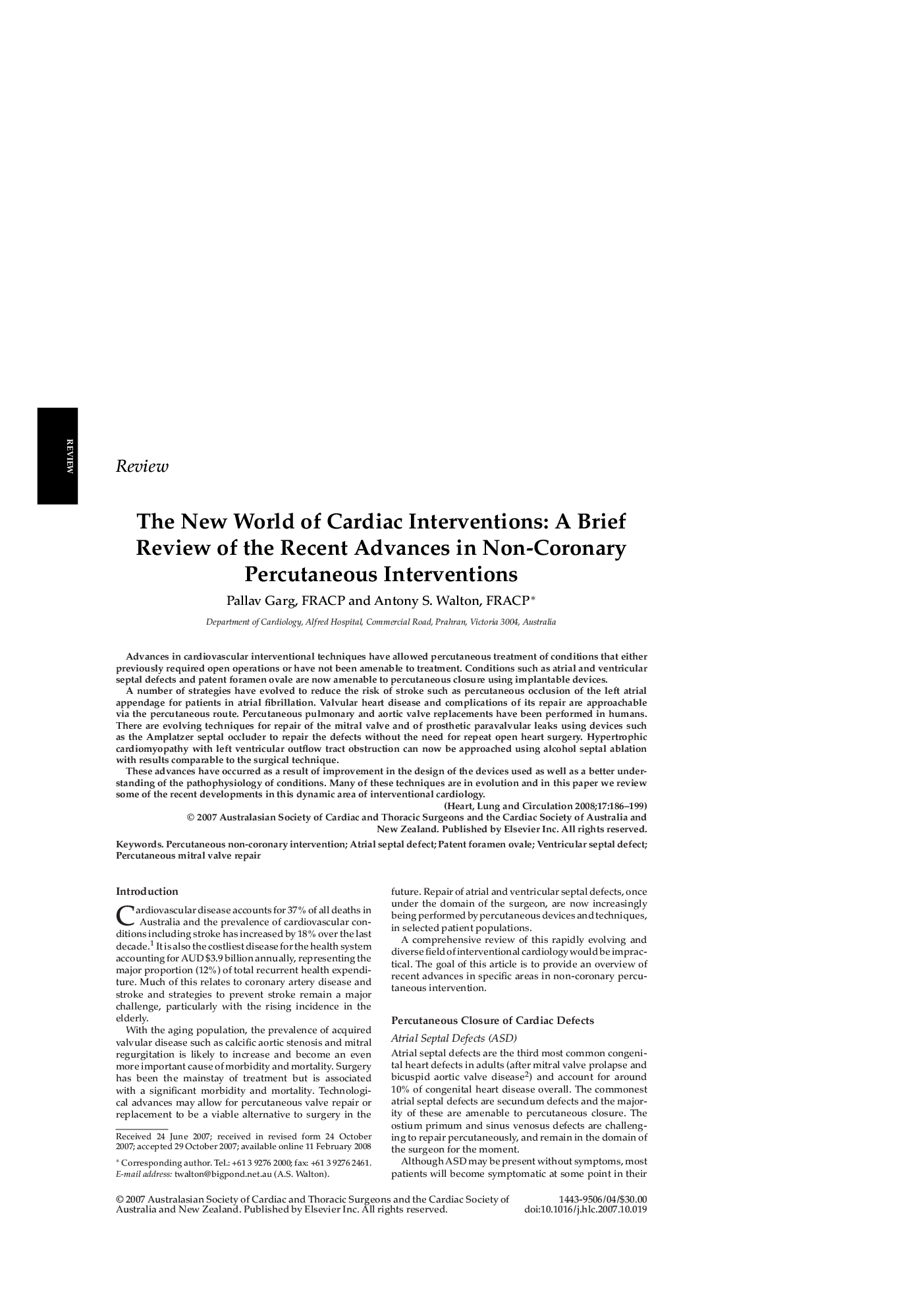| Article ID | Journal | Published Year | Pages | File Type |
|---|---|---|---|---|
| 2921379 | Heart, Lung and Circulation | 2008 | 14 Pages |
Advances in cardiovascular interventional techniques have allowed percutaneous treatment of conditions that either previously required open operations or have not been amenable to treatment. Conditions such as atrial and ventricular septal defects and patent foramen ovale are now amenable to percutaneous closure using implantable devices.A number of strategies have evolved to reduce the risk of stroke such as percutaneous occlusion of the left atrial appendage for patients in atrial fibrillation. Valvular heart disease and complications of its repair are approachable via the percutaneous route. Percutaneous pulmonary and aortic valve replacements have been performed in humans. There are evolving techniques for repair of the mitral valve and of prosthetic paravalvular leaks using devices such as the Amplatzer septal occluder to repair the defects without the need for repeat open heart surgery. Hypertrophic cardiomyopathy with left ventricular outflow tract obstruction can now be approached using alcohol septal ablation with results comparable to the surgical technique.These advances have occurred as a result of improvement in the design of the devices used as well as a better understanding of the pathophysiology of conditions. Many of these techniques are in evolution and in this paper we review some of the recent developments in this dynamic area of interventional cardiology.
